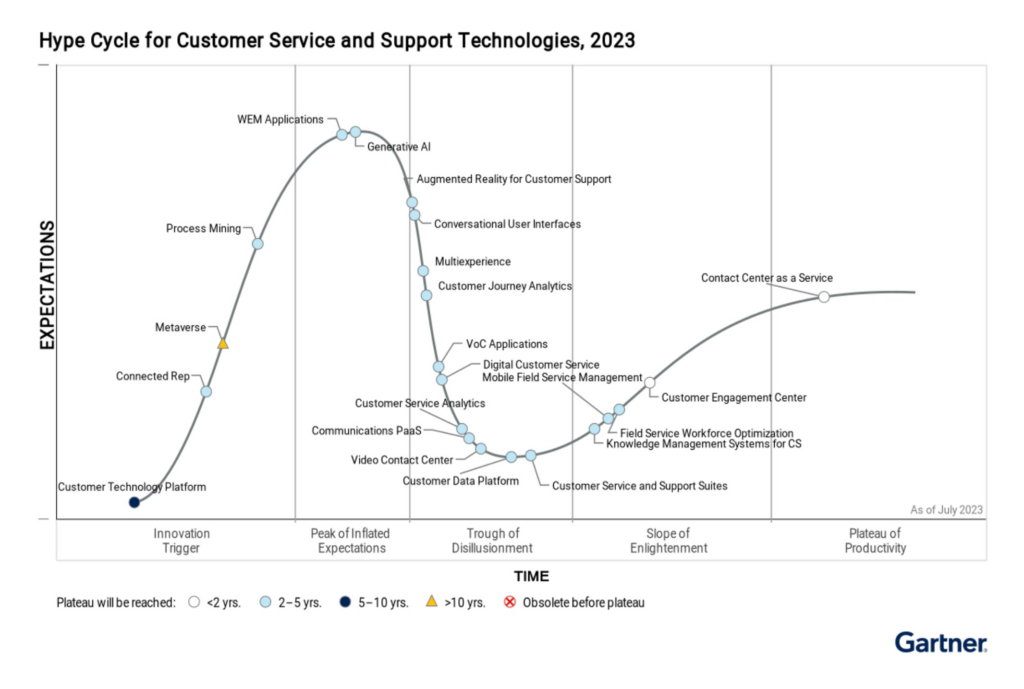
If you’ve been in IT for a few years, you probably know about Gartner’s famous “hype cycle” of new technologies that everyone seems to be talking about. (Does ChatGPT ring a bell?) But Gartner’s analysis also points to emerging trends that could change your thinking about the years ahead.
A good example is the customer technology platform (CTP), a powerful technology concept still in the embryonic stage, according to Gartner’s recent study, “Hype Cycle for Customer Service and Support Technologies, 2023.”
Gartner defines the CTP as the integration of all customer-facing technology and applications into a platform. The goal is to align the customer’s “outside in” view of the organization’s customer experience with the “inside out” delivery of the organization’s CX vision, strategy and technology. It’s certainly a worthy approach, but not something that’s easily done by most organizations.
Identifying the challenges
In most enterprises, both CX applications and human resources are organized into silos, making their integration into a CTP a daunting challenge. For instance, enterprises make ongoing investments in their CRM applications to provide knowledge and cues to support contact center agents and sales people. But it’s not easy to link these applications to CX tools that address a customer’s journey over the web, chat, text, voice and social media.
Gartner’s analysts point out that another challenge is organizational inertia, viewing change is a risk rather than an opportunity to improve the customer’s experience. Also, integrating CRM and CX systems may not be considered an IT priority for enterprises making major acquisitions or investing in legacy system upgrades.
You should also look at how your on-premise solutions, such as CRM applications, would integrate with a cloud-based CX platform. To build a CTP, you might need to maintain control over all the “moving pieces,” or delegate that responsibility to your cloud provider.
A path forward
A good starting point for addressing these challenges is to consider the CTP model as a long-term goal, rather than next year’s big IT investment. But you can begin thinking about the big picture – your organization’s market position, business strategy, and operational needs – since they will shape the design on your future platform.
Next, you should identify which key CRM applications need to be coordinated within the CTP to deliver the best possible customer experience. This could mean changing the CRM architecture or building a “bridge” to the CX functions you require. At the same time, you can think about how to remove pain points in the current customer journey by providing more internal support to your contact center team.
While looking at the early steps toward a CTP, you should also think about flexibility. Which technologies could be changed or updated if customer behaviors change unexpectedly? After all organizations that anticipated the rapid shift to mobile devices a decade ago had a big jump on their competitors.
As Gartner says, delivering a positive customer experience a key differentiator for any organization. Having a long-term integrated goal of a CTP can help you make smart short-term investments in internal and customer-facing technologies.
